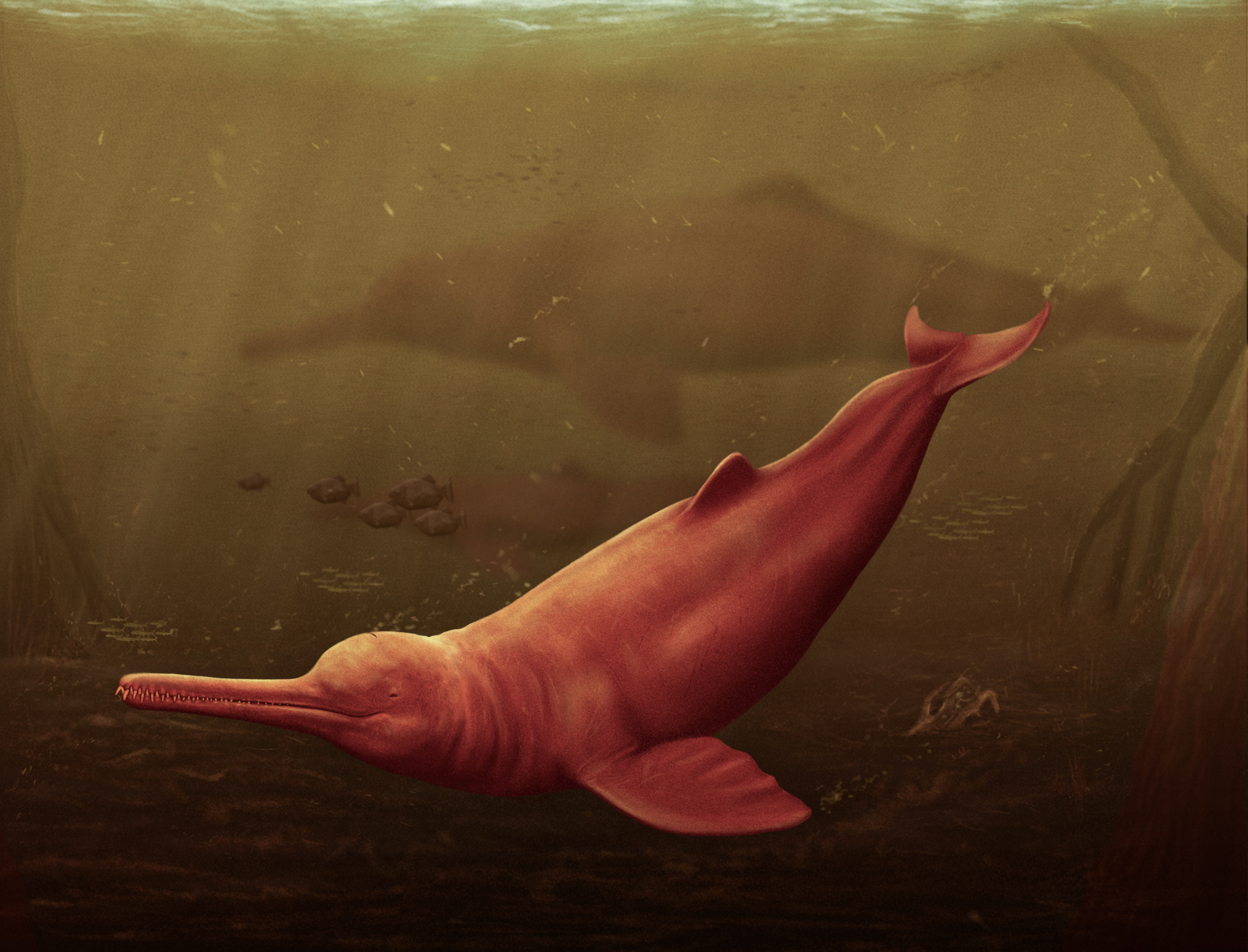The Suprise Discovery Of The World’s Largest Prehistoric Dolphin Reveals Unlikely Link
Posted on Categories Discover Magazine

The largest river dolphin fossil has been found — thousands of miles from its nearest living relative, reports an international group of paleontologists in Science Advances.
The team, led by University of Zurich (UZH) paleontologists, located the fossil in the Peruvian Amazon. It measures nearly 12 feet long and dates back about 16 million years. The new freshwater species, named Pebanista yacuruna, is linked to the rare contemporary South Asian river dolphin Platanista and the saltwater relatives from which it likely evolved.
The find was “a big surprise,” says Aldo Benites-Palomino, a UZH paleontologist and an author of the paper. “Fossils of dolphins that lived in river environments are extremely rare worldwide,” Benites-Palomino says. “I do not think anyone in the crew was expecting to find a dolphin on that trip. Fish, yes, crocodiles, yes, but dolphins, no.”
The surprises continued as they examined the fossil. “This is possibly the largest river dolphin ever recorded,” Benites-Palomino says. Also, one would expect the fossil to be related to more contemporary dolphins from the area. But it wasn’t. “Once studied, it became evident that it belongs to the same group of the Ganges river dolphins (Platanistidae), not the Amazon river dolphins (Iniidae).”
Both the fossil and the Ganges dolphins share similar facial crests, which help them use high-frequency sounds for navigation. The fossil’s long, toothed snout suggests that Pebanista fed on fish as modern river dolphins do.
Read More: River Dolphins Are Truly Unique and Disappearing
Unveiling the Colossal Salt Water Dolphin Fossil
The new species belongs to the Platanistoidea, a group of salt-water-dwelling dolphins common between 24 and 16 million years ago. The researchers believe that these marine ancestors invaded the freshwater ecosystems of proto-Amazonia in search of food and then adapted to that environment.
That area was covered by a large system of lakes and swamps called Pebas. This watery landscape stretched across what is now Colombia, Ecuador, Bolivia, Peru, and Brazil.
When the Pebas system began to transform into an environment resembling modern Amazonia about 10 million years ago, the change in habitats led to Pebanista’s prey disappearing, driving the giant dolphin to extinction. Relatives of today’s Amazon dolphins (Inia) eventually replaced them.
The age and size of the fossil — considered a holotype, meaning it is a single physical specimen upon which the description and name of a new species is based — aren’t the only noteworthy aspects of the find, according to the researchers. The conditions under which it was discovered also include some odds-beating twists.
Read More: Just How Intelligent Are Dolphins?
Narrow Window for Discovery
In 2018, Peruvian paleontologist Rodolfo Salas led a team more than 150 miles along the Napo River into the Amazon. Paleontologists consider that rainforest one of the toughest places for fieldwork. Fossils can only be found during the dry season, when low river levels expose the rocks that hold them. If researchers find fossils during that narrow window of opportunity, they don’t have much time to collect them before the rainy season.
Nearing the end of the expedition, Universidad Nacional Mayor de Sa Marcos (Lima, Peru) undergraduate Aldo Benites-Palomino was walking along the riverbed, discussing his future as a scientist with members of the team, when John J. Flynn, a paleontologist with the Museum of Natural History, noticed a small bone protruding from a cliff. He called Benites-Palomino over for a closer look. Palomino noticed what appeared to be a piece of fossilized jawbone on the riverbed. Benites-Palomino asked Flynn whether he thought the two pieces were connected.
Once they determined that the two pieces did indeed fit together, they called over the rest of the team and started digging. Their excitement grew as they uncovered more of the fossil. “This is something that we are not familiar with,” Benites-Palomino remembers thinking. “This is something that shouldn’t be here.”
Benites-Palomino, who is now working on his Ph.D. at UZH, says the excursion had already been a success, because they had already found some ancient crocodile fossils. “The dolphin was the cherry on top,” he says.
The prehistoric dolphin skull has been deposited in the Museo de Historia Natural in Lima, where Palomino was born.
Read More: How Eavesdropping on Clicks and Squeaks Helps Monitor Endangered Dolphins
Article Sources:
Our writers at Discovermagazine.com use peer-reviewed studies and high-quality sources for our articles, and our editors review them for accuracy and trustworthiness. Review the sources used below for this article: